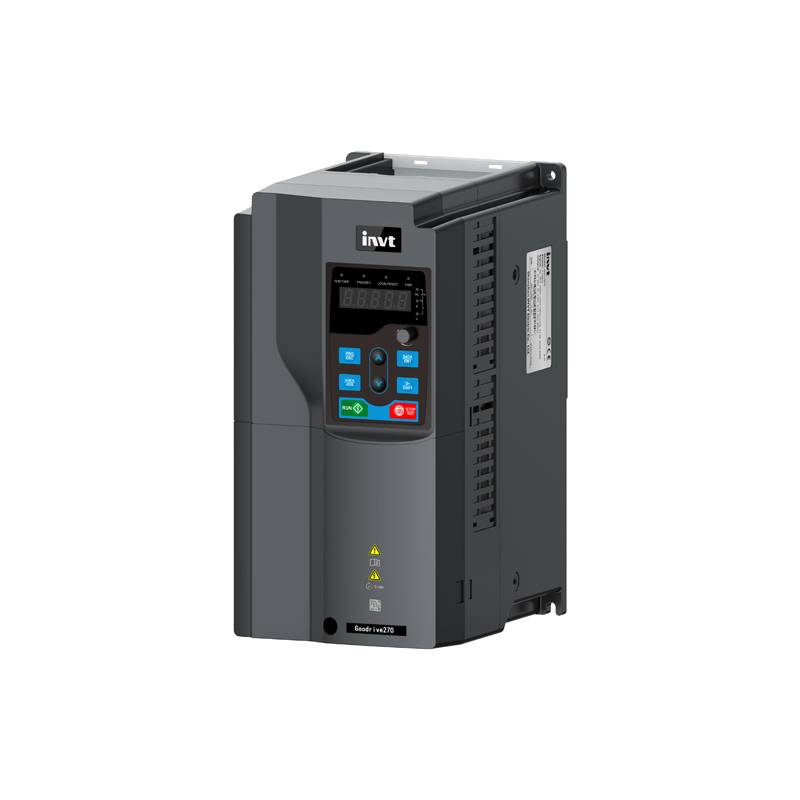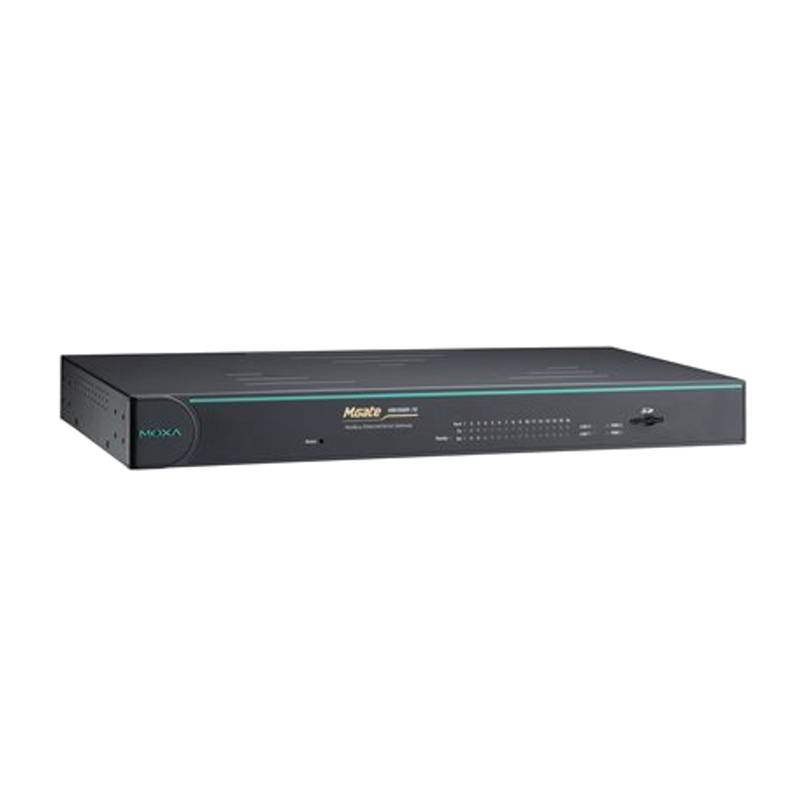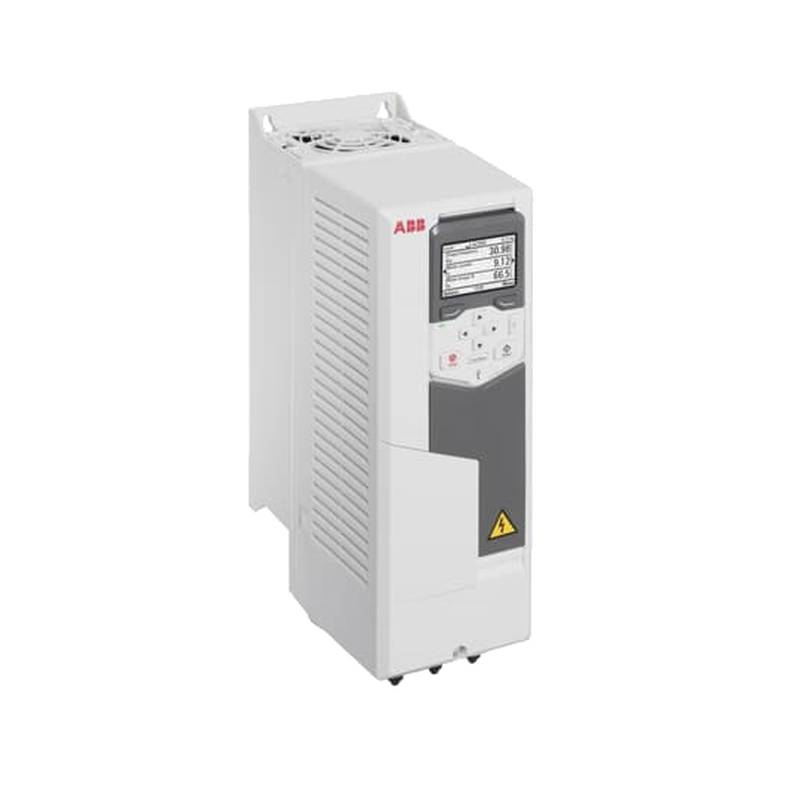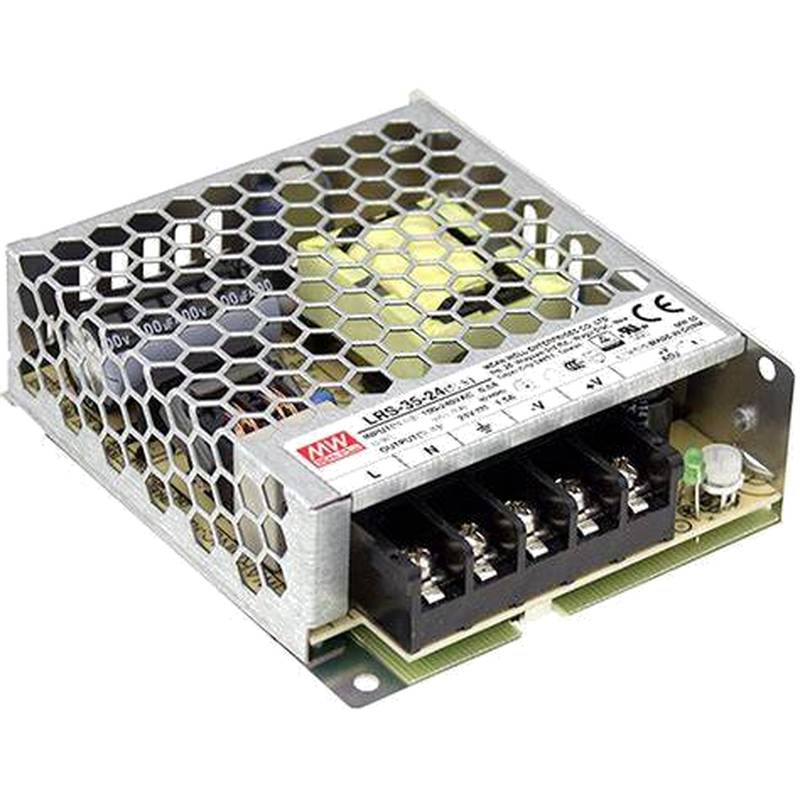
The INVT GD270-015-4 VFD is a robust variable frequency drive engineered for heavy-duty fan applications, offering precise motor control, significant energy savings, and enhanced operational reliability. This model is specifically designed to optimize the performance of industrial fans by adjusting motor speed in response to demand, a critical function in various sectors. Key advantages include its high energy efficiency, flexible configuration options, and compatibility with both synchronous and asynchronous motors. Technical specifications highlight its suitability for demanding environments, with an operating temperature range of -10°C to +50°C, requiring derating above 40°C. The unit operates on a 3-phase, 415V power supply and features an aluminum body.
Product Specifications
| Parameter | Specification |
| :----------------------- | :-------------------------------- |
| Model | GD270-015-4 |
| Power | 15 kW / 20 HP |
| Input Voltage | 3 Phase, 415V |
| Output Frequency | 0-400 Hz |
| Ambient Temperature | -10°C to +50°C (derating > 40°C) |
| Motor Type Compatibility | Synchronous & Asynchronous |
| Body Material | Aluminum |
| Frequency | 50 Hz |
Core Features & Market Positioning
The INVT GD270-015-4 stands out in the industrial VFD market due to its specialized design for fan and pump applications, offering integrated functions that simplify setup and operation. Its "install and play" feature for HVAC applications streamlines integration, making it a competitive choice for engineers and facility managers seeking efficiency and ease of use. The unit's compact, book-type design also facilitates easy installation in space-constrained cabinets, a notable advantage in industrial settings. Market positioning emphasizes its high energy efficiency, driven by a new ECO algorithm, which directly translates to reduced operating costs for end-users. This focus on cost reduction and performance optimization positions the GD270 series as a valuable asset for industries aiming to improve their operational sustainability and bottom line.
Key Application Scenarios
The INVT GD270-015-4 VFD is ideally suited for a wide array of heavy-duty fan applications across diverse industrial segments. Its design principles cater to scenarios demanding precise airflow control and energy conservation. Common applications include:
HVAC Systems: Optimizing air circulation in commercial buildings, industrial facilities, and data centers for consistent temperature and humidity control, while minimizing energy consumption. Wastewater Treatment Plants: Regulating fan speeds for ventilation and aeration processes, ensuring efficient operation and reduced power usage. Chemical and Metallurgical Industries: Managing exhaust and ventilation fans in environments requiring specific air quality control and fume extraction. Electric Power Generation: Controlling large-scale ventilation fans in power plants for cooling and air circulation. Industrial Ventilation and Exhaust: Providing variable speed control for general industrial ventilation, dust collection systems, and process exhaust fans.
The VFD's ability to dynamically adjust fan speed based on real-time demand significantly contributes to energy savings, often reducing power consumption by up to 50% compared to fixed-speed systems.
Practical System Integration Guidance
Integrating the INVT GD270-015-4 VFD into an existing or new system requires attention to wiring, parameter setup, and environmental considerations. The VFD supports both asynchronous and synchronous motors, offering flexibility in motor selection. For optimal performance and safety, ensure that all power and control cables are routed separately and comply with EMC requirements. Proper grounding is essential, following the VFD's specific instructions.
The GD270 series is designed for easy installation, adopting a book-type design suitable for cabinet mounting. Ensure adequate ventilation space within the cabinet to manage heat dissipation effectively, as detailed in the installation guidelines. For initial setup and commissioning, refer to the operational manual for configuring parameters related to motor characteristics, control modes (e.g., Sensorless Vector Control - SVC), and application-specific functions like PID control, multi-step speed, or pump control macros. The VFD supports various communication protocols, including Profibus-DP, Profinet, and CANopen, allowing for seamless integration into larger industrial control systems.
Operation and Risk Mitigation
Safe and efficient operation of the INVT GD270-015-4 VFD is paramount. Users should be aware of potential risks and implement appropriate mitigation strategies. The VFD offers robust protection features, including overcurrent, overvoltage, undervoltage, overtemperature, and phase loss protection.
For operational safety, it is crucial to adhere to the installation and wiring guidelines provided in the user manual. The VFD incorporates features like soft start and stop to reduce mechanical shock on the fan and motor, thereby extending equipment lifespan. It also includes functions such as "Fire ride-through" for critical applications like tunnel ventilation, ensuring continued operation during emergencies by ignoring non-critical fault alarms. Additionally, features like "Freezing protection" and "Motor heating" are designed to prevent failures caused by environmental factors like condensation or low temperatures.
Troubleshooting common issues often involves checking parameter settings, motor connections, and the power supply. For instance, an "E4" fault code typically indicates an overcurrent situation, often resolved by adjusting acceleration/deceleration times or checking for load shorts. Always consult the VFD's fault code list for specific diagnostic information.
Scalability & Long-Term Value
The INVT GD270-015-4 VFD is designed with scalability and long-term value in mind, supporting integration into evolving industrial automation landscapes. Its highly extensible nature allows for the addition of optional communication cards (Profibus-DP, Profinet, CANopen) and I/O expansion modules, enabling it to adapt to increasingly complex control requirements and network integration needs. The support for wireless communication, through GPRS, WiFi, or Bluetooth add-ons, facilitates remote monitoring and data analysis, paving the way for IIoT integration and predictive maintenance strategies.
Furthermore, the VFD's compatibility with both synchronous and asynchronous motors provides flexibility for future motor upgrades or replacements. The robust design, including enhanced PCB coating for harsh environments, ensures durability and reduces long-term maintenance costs, contributing to a superior return on investment. The ability to upgrade firmware and potentially integrate with cloud-based platforms enhances its future-proofing and sustained relevance in smart manufacturing environments.
Frequently Asked Questions (FAQs)
1. What are the primary benefits of using the INVT GD270-015-4 VFD for heavy-duty fan drives?
The GD270-015-4 VFD offers significant energy savings by precisely controlling fan speed to match demand, often reducing consumption by up to 50% compared to fixed-speed systems. It also extends equipment life through soft start/stop features, reducing mechanical stress on motors and fans.
Furthermore, this VFD provides enhanced operational control, allowing for precise adjustment of airflow and pressure, which is crucial for maintaining optimal system performance and comfort levels in various industrial applications.
It contributes to lower operational costs through reduced energy consumption and decreased maintenance needs due to its robust design and protective features.
2. How does the INVT GD270-015-4 VFD ensure energy efficiency in fan applications?
This VFD achieves energy efficiency by modulating the fan's motor speed in real-time based on system demand, utilizing the principle that fan power consumption is proportional to the cube of its speed. This means even small reductions in speed lead to substantial power savings.
It employs advanced algorithms, such as the new ECO algorithm, to optimize output power and minimize losses, especially at lower dynamic loads. Features like "sleep at night" or energy-saving run modes at light loads further prevent unnecessary energy expenditure.
The precise speed control eliminates the need for inefficient methods like damper control, directly translating saved energy into reduced operational costs and a smaller environmental footprint.
3. What types of motors are compatible with the INVT GD270-015-4 VFD?
The GD270-015-4 VFD is designed to be highly versatile and supports the driving of both asynchronous induction motors and permanent-magnet synchronous motors. This broad compatibility allows users to leverage existing motor infrastructure or select motors best suited for their specific application requirements.
This feature provides flexibility in motor selection, enabling users to choose motors based on factors like efficiency, torque characteristics, or availability, without being restricted to a single motor type.
The VFD utilizes advanced control technologies, such as Space Voltage Vector Control and Sensorless Vector Control (SVC), to effectively manage and optimize the performance of these diverse motor types across various operating conditions.
4. Can the INVT GD270-015-4 VFD be integrated into existing industrial control systems?
Yes, the INVT GD270-015-4 VFD offers excellent integration capabilities with existing industrial control systems through support for various communication protocols. It can be configured with optional communication cards for protocols such as Profibus-DP, Profinet, and CANopen.
This extensibility allows for seamless networking with PLCs, HMIs, and other intelligent devices, facilitating centralized control and monitoring within a plant-wide automation architecture.
Furthermore, the VFD supports wireless communication options (GPRS, WiFi, Bluetooth add-ons), enabling remote monitoring and data acquisition, which is crucial for IIoT integration and advanced analytics.
5. What are the typical operating and environmental considerations for the INVT GD270-015-4 VFD?
The INVT GD270-015-4 VFD operates within an ambient temperature range of -10°C to +50°C, with derating required for temperatures exceeding 40°C to maintain performance and longevity. It is designed with enhanced PCB coating to withstand harsh environments, providing protection against dust and humidity.
Proper installation is critical; the VFD requires adequate ventilation space within control cabinets to dissipate heat effectively. It should be installed on non-flammable materials, with heat-radiating components kept away from flammable substances.
Attention must also be paid to electromagnetic compatibility (EMC), ensuring proper grounding and separation of power and control cables to prevent interference. Installation at altitudes above 3000m may require specific considerations or consultation.
6. What are some common fault codes associated with the INVT GD270-015-4 VFD, and how are they addressed?
A common fault code is "E4," which typically indicates an overcurrent situation during acceleration or deceleration. The solution often involves increasing the ACC/DEC time parameters to allow for a smoother ramp-up or ramp-down of motor speed.
Another potential issue is related to voltage fluctuations. The VFD is designed to handle transient voltage drops and short outages, but persistent grid voltage issues may require checking the input power and ensuring it falls within the VFD's acceptable range.
For other faults, such as overvoltage or undervoltage, checking related function code settings, grid voltage stability, or motor parameters is necessary. Always refer to the VFD's comprehensive fault code list for precise diagnostics and solutions.
7. How does the "Fire Ride-Through" feature function, and in which applications is it most beneficial?
The "Fire Ride-Through" feature is specifically designed for critical applications where continuous operation is essential even during emergency situations, such as a fire. In such scenarios, the VFD prioritizes fan operation to disperse smoke, overriding non-critical fault alarms and internal protection functions to maintain maximum uptime.
This feature is most beneficial in environments like tunnels, large industrial buildings, or public spaces where smoke extraction is a primary safety concern during emergencies. By ensuring the ventilation system remains active, it significantly enhances occupant safety and facilitates emergency response efforts.
It demonstrates the VFD's robustness and ability to function under extreme conditions, providing an added layer of reliability for life-safety systems.
8. What is the role of the INVT GD270-015-4 VFD in pump applications?
While specified for fan drives, the GD270 series is also optimized for pump applications. It includes integrated functions for pump control, such as PID control for pressure or flow regulation and multi-pump switchover capabilities. This allows for constant pressure water supply systems and efficient management of multiple pumps operating in tandem.
The VFD can prevent water hammer effects by smoothly injecting water during power-up, protecting the pump and piping system from sudden pressure surges. Features like desilting (periodic forward/reverse rotation) and frost-proofing (automatic motor rotation at low temperatures) further enhance pump reliability and reduce maintenance workload.
Its motor heating function, which energizes the motor with DC current during work interruptions, prevents failures caused by condensation, especially in humid environments.
9. How does the book-type design of the INVT GD270-015-4 VFD benefit installation?
The book-type design of the INVT GD270-015-4 VFD offers significant advantages for installation, particularly in space-constrained industrial cabinets. This compact form factor allows for side-by-side mounting of multiple units without requiring significant air gaps between them, maximizing usable space within the enclosure.
This design simplifies wiring and maintenance, as components and terminals are typically more accessible compared to bulkier VFD units. It also contributes to a more organized and streamlined electrical panel layout, improving overall system aesthetics and ease of servicing.
The book-type construction facilitates easy installation into standard control cabinets, reducing the need for custom mounting solutions and potentially lowering overall system integration costs.
10. What are the communication options available for the INVT GD270-015-4 VFD for advanced control and monitoring?
The INVT GD270-015-4 VFD supports a range of advanced communication options to facilitate integration into sophisticated control architectures. It is highly extensible and can be equipped with optional communication cards for industry-standard protocols like Profibus-DP, Profinet, and CANopen.
These protocols enable real-time data exchange with Programmable Logic Controllers (PLCs), Human-Machine Interfaces (HMIs), and other supervisory control systems, allowing for centralized management and diagnostics.
Additionally, the VFD supports wireless communication add-ons (e.g., GPRS, WiFi, Bluetooth) that enable remote monitoring, data logging, and analysis, aligning with Industry 4.0 and IIoT initiatives for smart factory operations.
























